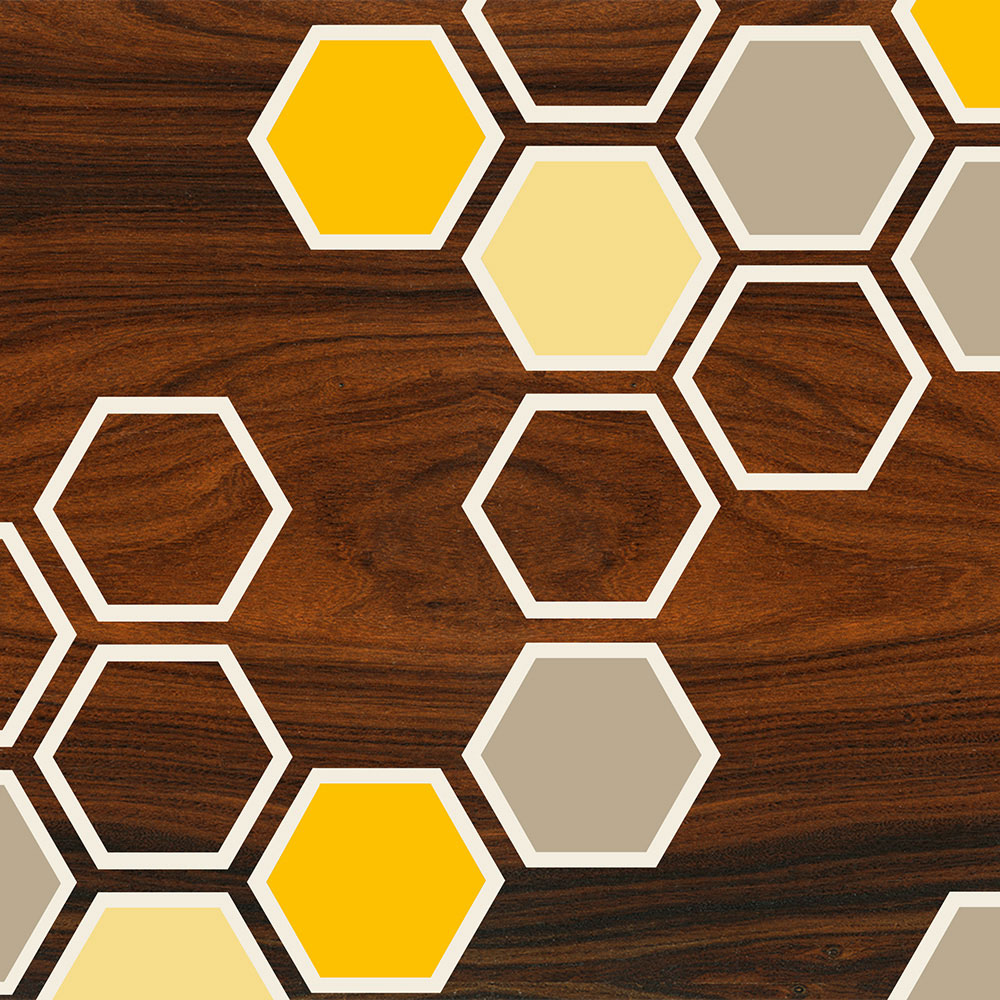


Other garments were characterised by irreverent fabric spikes based on the configuration of an origami fortune teller (make several, then stitch them together one after the next and you will get a rough version of Watanabe's scarves), while the effects of trellis-like packaging cardboard was cleverly reproduced into laser-cut capes, coats, ponchos, and biker jackets. Some of separates, outerwear and dresses were based on the Chinese flat paper decorations known as paper gourds that can be opened up to reveal a hidden and more fantastic world of colours and volumes (think about Li Hongbo's sculptures and you get an idea.).
Honeycomb design full#
His Autumn/Winter 2015-16 collection started with full inverted cupcake-like skirts and, little by little, it developed through expandable pieces in structured felt-like fabrics, matched at times with lampshade-like headdresses (ideal if you will be staging a recreation of Lewis Carroll's T hrough the Looking-Glass and you need a chess piece costume.) and cartoonish hairstyles. Some of the most spectacular examples of these complex structures appeared on the Parisian runways, in particular during Junya Watanabe's catwalk show. The piece also includes a thick honeycombed metal structure that seems to be the focal point of the structure.įashion has also taken inspiration from these natural shapes and forms: Sarah Burton based Alexander McQueen's Spring/Summer 2013 collection on honeycombed embroideries, prints and organza structures and patterns (matched with headdresses inspired by beekeepers' veils).Ĭome next Autumn, honeycombs and expandable structures based on geometries will be fashionable once again.
Honeycomb design series#
Frank Stella's irregularly shaped "Etymology (Q 10)" from the Moby Dick Series (1990) is characterised by disparate elements such as sinuous wave-like forms fluently flowing from a nucleus and opening onto other elements - like steel tubing - that expand outward. Remarkable structures found in nature - such as honeycombs - quite often inspired a variety of applications in the creative arts. Wasp nests vary indeed in structure, size and raw materials employed, with the genus Polybia being the smallest of paper nest makers. The complicated structure of nests made by social insects is, for example, particularly intriguing since it is the product of the labour of many thousands of individuals working according to a fixed sequence of simple behaviours and producing an impressive and complex whole. Nature offers us the chance to carry out exciting explorations into several geometrical figures and shapes.


 0 kommentar(er)
0 kommentar(er)
